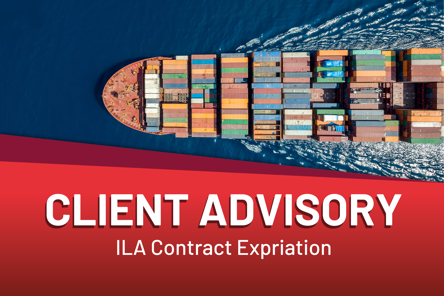WHAT’S THE LATEST
Update as of 9/30: The International Longshoremen’s Association’s (ILA) current labor contract covering union members across the US East Coast and Gulf Ports, will expire today at 11:59 p.m. ET. If a new agreement with the United States Maritime Alliance (USMX) is not reached by then, the ILA is set to go on strike as early as 12:01 a.m. ET on Tuesday, 10/1. No talks are currently scheduled to take place before tonight’s deadline.
A walkout would be the first East Coast dock strike since 1977.
WHAT WE KNOW
- Over the weekend, Biden administration officials were in touch with both the ILA and USMX, urging them to come to a fair agreement.
- Federal law (the Taft-Hartley Act) provides a mechanism for the President to require workers remain on their jobs and prevent a strike if the impacts could affect national security.
- As of 9/29, President Biden does not intend to intervene to prevent a strike, stating, “It’s collective bargaining. I don’t believe in Taft-Hartley.”
- On 9/26, the USMX filed an unfair labor practice (ULP) complaint with the National Labor Relations Board requesting “immediate injunctive relief” after the ILA refused to negotiate.
- Due to a ‘no strike’ clause in effect until the current contract’s expiration, no labor action is expected before 10/1.
- A strike would affect about 36 major ports from Maine to Texas and could impact more than 68% of all containerized US exports and roughly 56% of US imports.
- For context, the value of containerized imports at those 36 ports amounted to $588 billion in 2023.
- Depending on the length of the strike, there could be shortages of consumer and industrial goods, raw materials, food shipments and pharmaceutical products, which would lead to potential price increases.
- However, consumers are not likely to be impacted by a strike right away as many companies have prepared by diverting shipments to West Coast ports or importing goods earlier than usual.
- The Port of Long Beach experienced unprecedented growth in August, setting a new record for monthly cargo volume in its 113-year history.
- Oxford Economics analysts anticipate a strike would cost the economy $4.5 billion to $7.5 billion for every week it continues.
- If a strike occurs starting Oct. 1, it’s widely expected that it would shut down 5 of the 10 busiest ports in North America.
- In an event of a strike, you can expect severe congestion and halted operations at these major ports.
- For each day the ports are shut down, it is estimated that it would take nearly a week of recovery.
- Warehouses and transportation hubs would face delays but may be manageable short term.
- Trucking and rail transportation would be heavily impacted and would lead to higher costs and longer delays.
WHAT'S NEXT?
As your logistics partner, we are ready and able to pivot quickly. Our team is monitoring the situation closely, hoping the negotiations between all parties will be resolved before the expiration of the current contract. In the event of labor disruptions, we’re prepared to implement contingency plans to ensure continuity of our export and import services where an alternative routing is possible.
We will frequently communicate and advise on the situation as more details become available.
If you have any questions, please reach out to your SEKO representative, or email us at hello@sekologistics.com.





